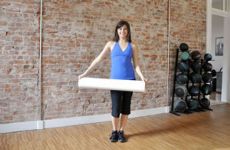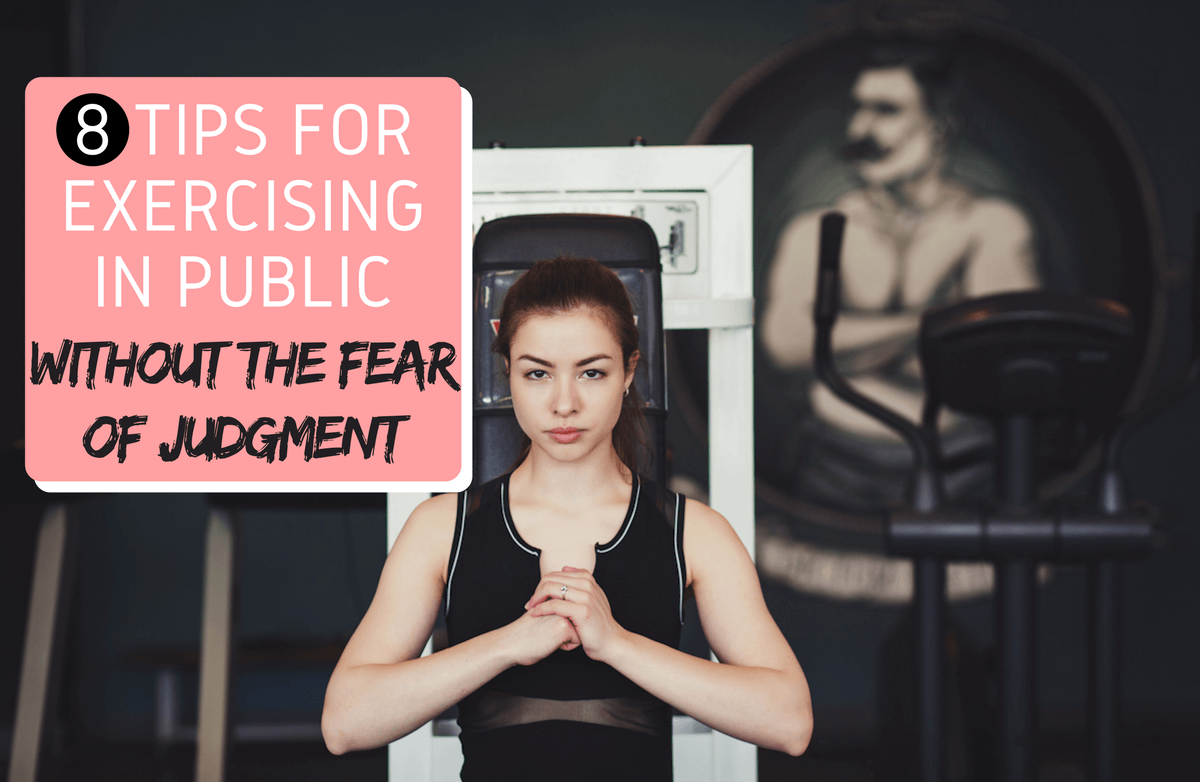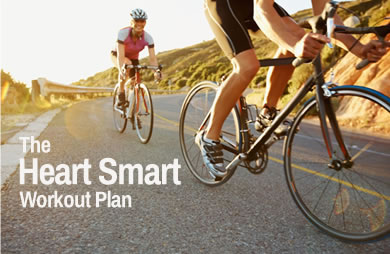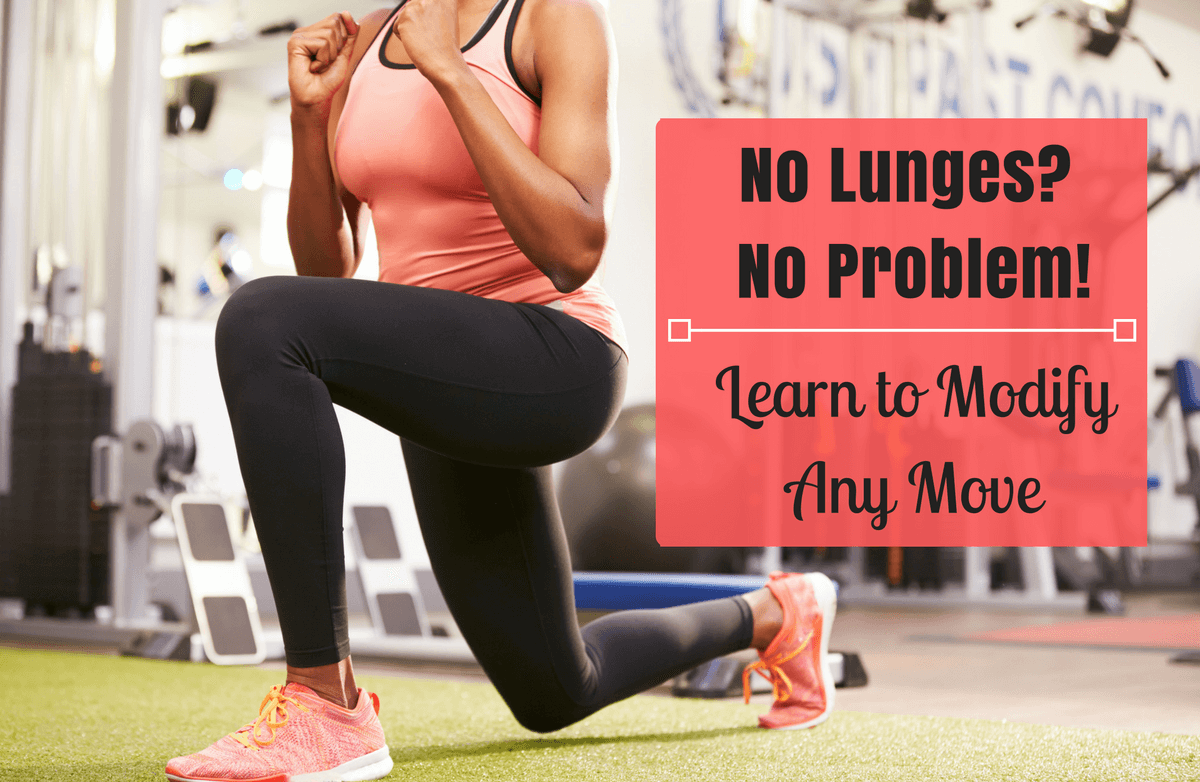Stiff, sore muscles are never fun—and they're certainly not conducive to a mobile, active lifestyle—but there are some areas of the body where they are even more irksome than others.
Hamstrings, we're talking to you!
This trio of muscles includes the biceps femoris, the semimembranosus and the semitendinosus. They run down the back of the upper leg and are involved in pretty much every lower-body movement, so it's not really possible to mollycoddle the hamstrings by using them less. From walking and running to biking and stretching, these muscles are called upon often—and when they're not feeling healthy and happy, they'll let you know it.
If they're not addressed, tight hamstrings can lead to more serious problems throughout the body, according to Dr. Keith Sparks from ICT Muscle & Joint Clinic. "Over-taught hamstrings can create problems local to the hamstrings, such as low back pain and knee pain, but it can also create issues further away from the hamstrings, such as plantar fasciitis and shoulder pain due to fascial connections," he explains.
Specifically, tight hamstrings can cause sacroiliac joint pain in the lower back because they tend to pull the pelvis out of position, according to HIIT Pilates instructor and wellness coach Melanie Kotcher. Engaging in dynamic hamstring stretches and holding positions for 15 to 30 seconds can help to alleviate tightness in the hamstrings, pelvis and lower back region.
According to physical therapist Vivian Eisenstadt, tight hamstrings are directly related to lower back pain. "When a person's hamstrings are too tight, they pull the pelvic bone into what's known as a 'posterior pelvic tilt,'" she explains. "This in turn pulls on the low back, reversing the curve of the low back and making it vulnerable to muscle strain, aching and, in severe situations, disc herniation." Sitting for prolonged periods of time can also make the hamstrings tight, which is why
Eisenstadt recommends a consistent stretching regimen for all of her patients who have desk jobs or drive a lot. Including hamstring stretches in your daily routine is key to relieving pain and tension, increasing your range of motion and preventing future injuries.
Standing Hip Hinge (beginner)
Dr. Keith Sparks, ICT Muscle & Joint Clinic
The standing hamstring hip hinge stretch helps to fully lengthen the hamstrings while applying light pressure into the stretch without compensating tension elsewhere in the body.
- Place a straight leg on an object at lower shin to knee height, such as a chair.
- Keep the target leg, knee and lower back straight.
- To feel the stretch, push your hips backward.
- To feel a deeper stretch, bend the standing leg as you push your hips backward.
- It is very important to keep the lower back straight as you push your hips backward and bend the standing knee.
- Advanced progression: Before hinging at the waist, rotate the foot inward or outward. From here, hinge at the waist. This will target different hamstring muscles.
Seated Saw Stretch (beginner) HIIT Pilates instructor and wellness coach Melanie Kotcher - Sit with your legs extended out on a mat about hip width apart with your feet flexed.
- Extend your arms out alongside you in line with your shoulders with palms down. Engage your abs.
- Twist from your waist to the right with your arms following and fall down over your right leg, reaching your left arm to the outside of your right foot with your head down.
- Roll your spine up one vertebra at a time with arms still extended and twist a little more to the right with a straight spine.
- Rotate your body back to the center with your arms following and extend both arms out to the side, in line with your shoulders.
- Repeat on the other side.
Modified Bear Crawl (intermediate) Dr. Keith Sparks
The modified bear crawl helps to not only lengthen the hamstring, but also stretches the tight calf and foot muscles and associated fascial connections through movement. - Start on your hands and knees.
- Push your hips upward toward the ceiling in "bear position."
- As you bring one leg forward, do not allow the same side's hand to leave the ground until you straighten the same side's knee completely.
- The closer you can bring your foot to the same side's hand with a straight leg, the more flexibility you will have in your posterior chain.
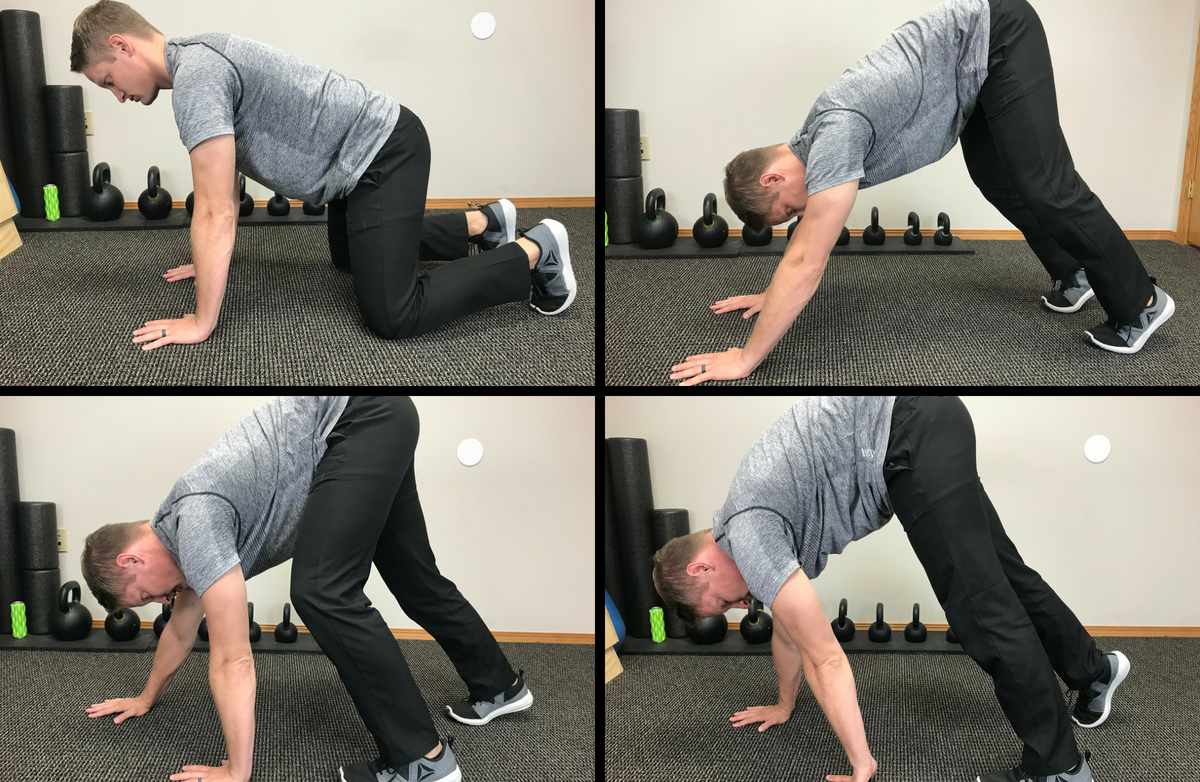
Seated Hamstring Stretch (beginner) Melanie Kotcher - Sit on a mat with your right leg extended and your left leg bent, with your left foot placed against your right inner thigh.
- Lean forward with a straight back from your hips and reach your arms up alongside your ears until you feel a stretch in your hamstring. Squeeze in your abs and close your ribs together.
- Fall over your right leg with a rounded back and head down, and grab onto your shin or foot for a deeper stretch. Try pointing and flexing your foot.
- Repeat on the other side.
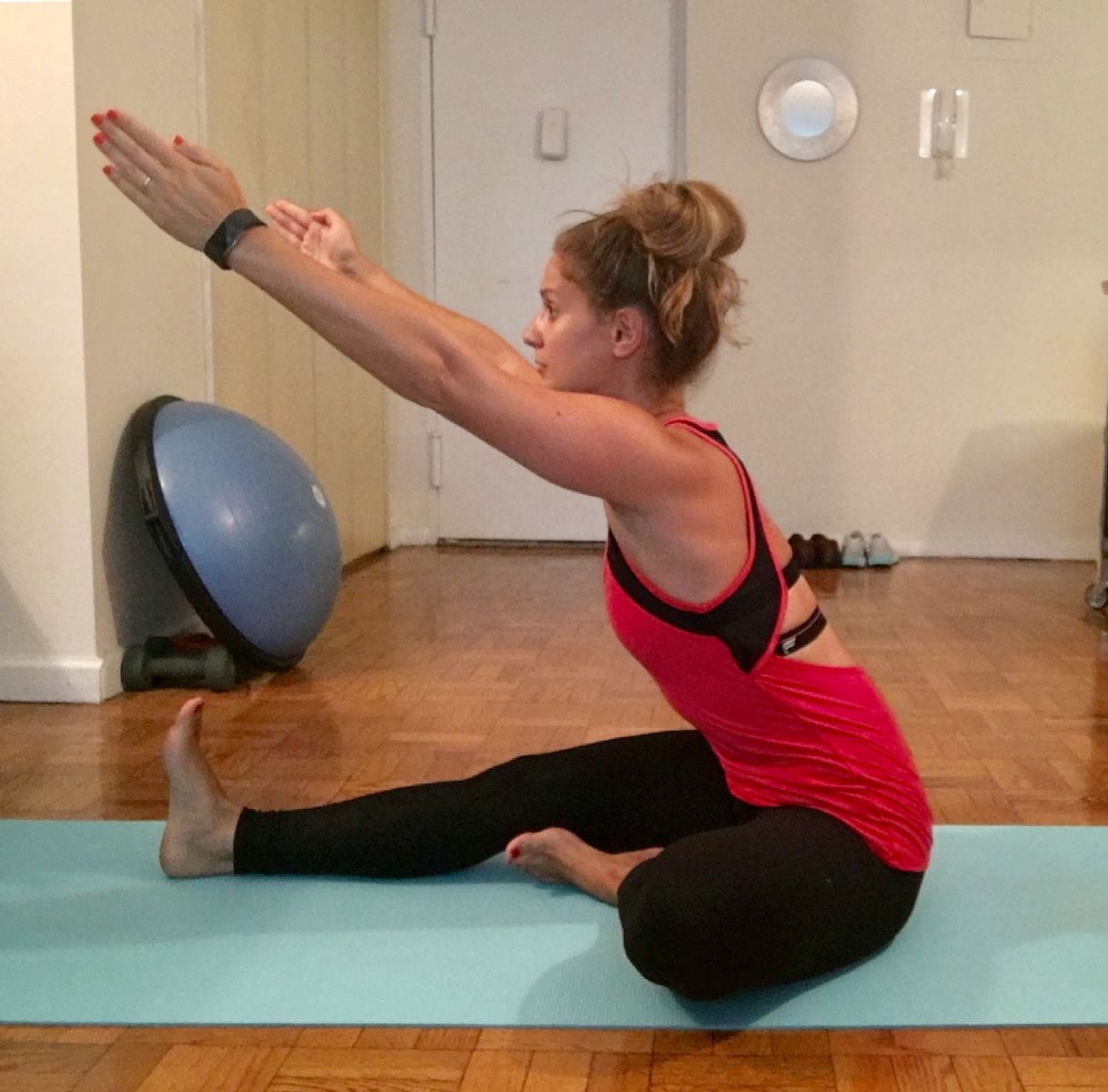
Downward Facing Dog (intermediate) Melanie Kotcher - Start by placing your hands below your shoulders and your knees below your hips on a mat in a triangle position.
- Press firmly through your palms and extend your elbows as you relax your back, tuck your toes and lift your hips up away toward the ceiling. Keep your head, neck and back aligned. Engage your abs and keep your shoulders externally rotated.
- Press the floor away from you as you lift your pelvis more and push through your heels into the mat.
- Try bending one knee at a time to get different variations of the hamstring stretch.
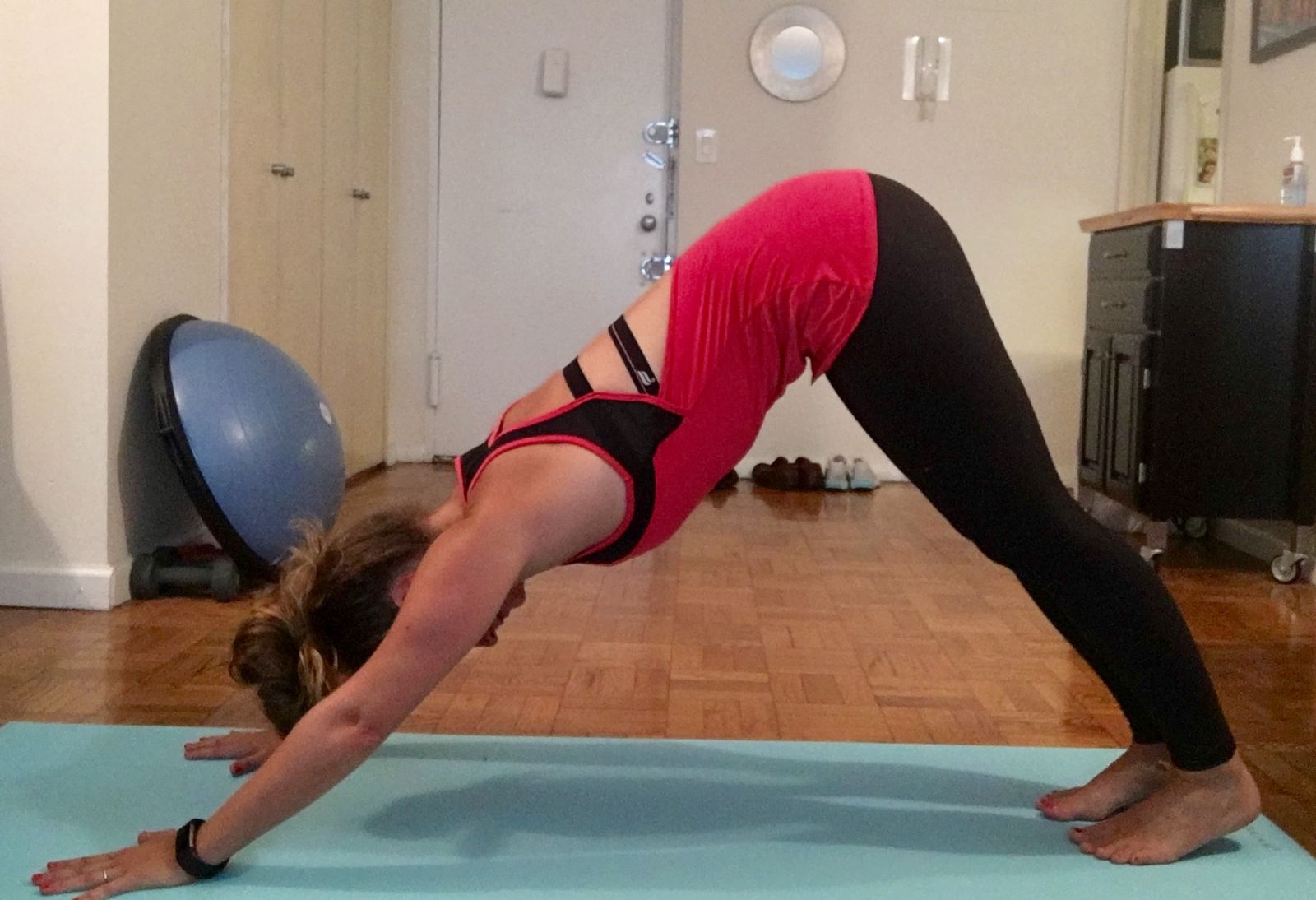
Wide-Leg Modified Hamstring Stretch (beginner/intermediate) - Stand tall with back straight, feet wider than the hips and arms at your sides. Turn from the waist to face your right leg.
- Bend forward from the waist, placing your hands on your right thigh for support, until your back is flat. Think of reaching your chin out towards the floor in front of your right foot.
- Breathe deeply and hold for 10 to 30 seconds. Stretch to the point of mild discomfort, not to the point of pain. Never bounce. Keep your abs engaged to protect your back. Bend your knees, if necessary, to decrease the intensity of this stretch.
- Repeat on opposite side.
.jpg) Wide-Leg Hamstring Stretch (advanced) - Stand tall with back straight, feet wider than the hips and arms at your sides. Turn from the waist to face your right leg.
- Slowly bend forward from the waist, bringing your hands toward your right foot as your torso collapses over your leg.
- Breathe deeply and hold for 10 to 30 seconds. Stretch to the point of mild discomfort, not to the point of pain. Never bounce. Keep your abs engaged to protect your back.
- Repeat on opposite side.
.jpg) Stance Leg Stretch (advanced) Dr. Keith Sparks - Start by laying on the edge of a bed or couch (stretch works best on something hip-height)
- Keep the knee in between the foot and hip. Activate the entire leg by driving the foot downward into the floor and pushing the hip toward the ceiling.
- From the top view: the knee is in a straight line; it does not fall inward or outward of the foot. The torso does not bend side-to-side—everything stays straight.
- From the side view: The hip is higher and behind the knee. The shin is relatively vertical. Do not let the shin drift too far forward over the knee. The torso is straight, keeping a neutral spine. The belly button does not fall to the ground.
.JPG)
(If you can achieve all of this, your body is in a perfect, activated position. This means all the muscles, tendons, nerves, fascia, ligaments, etc. are in unison, creating the adequate amount of stretch and activation. By putting your body in this position and activating it, you brain-body connection finds the appropriate amount of stretch needed.)
Standing Hamstring Stretch (beginner) Melanie Kotcher - Bend your right knee slightly and pull your abs gently inward with ribs closed. Extend your left leg with your left foot flexed on the mat.
- Lean forward from your hips and place your palms on top of your right thigh for balance and support.
- Keep your back straight and your head and neck in line with your back.
- Switch to stretch on the other side.
.jpg)
Reclined Hamstring Stretch Melanie Kotcher - Lay down on your back and extend your right leg up to the ceiling with your left leg extended flat on the mat. Keep your pelvis neutral and grounded onto the mat.
- Grasp the right leg at the back of the thigh, just below the knee, and slowly and gently pull it in toward you.
- Repeat on the other side.
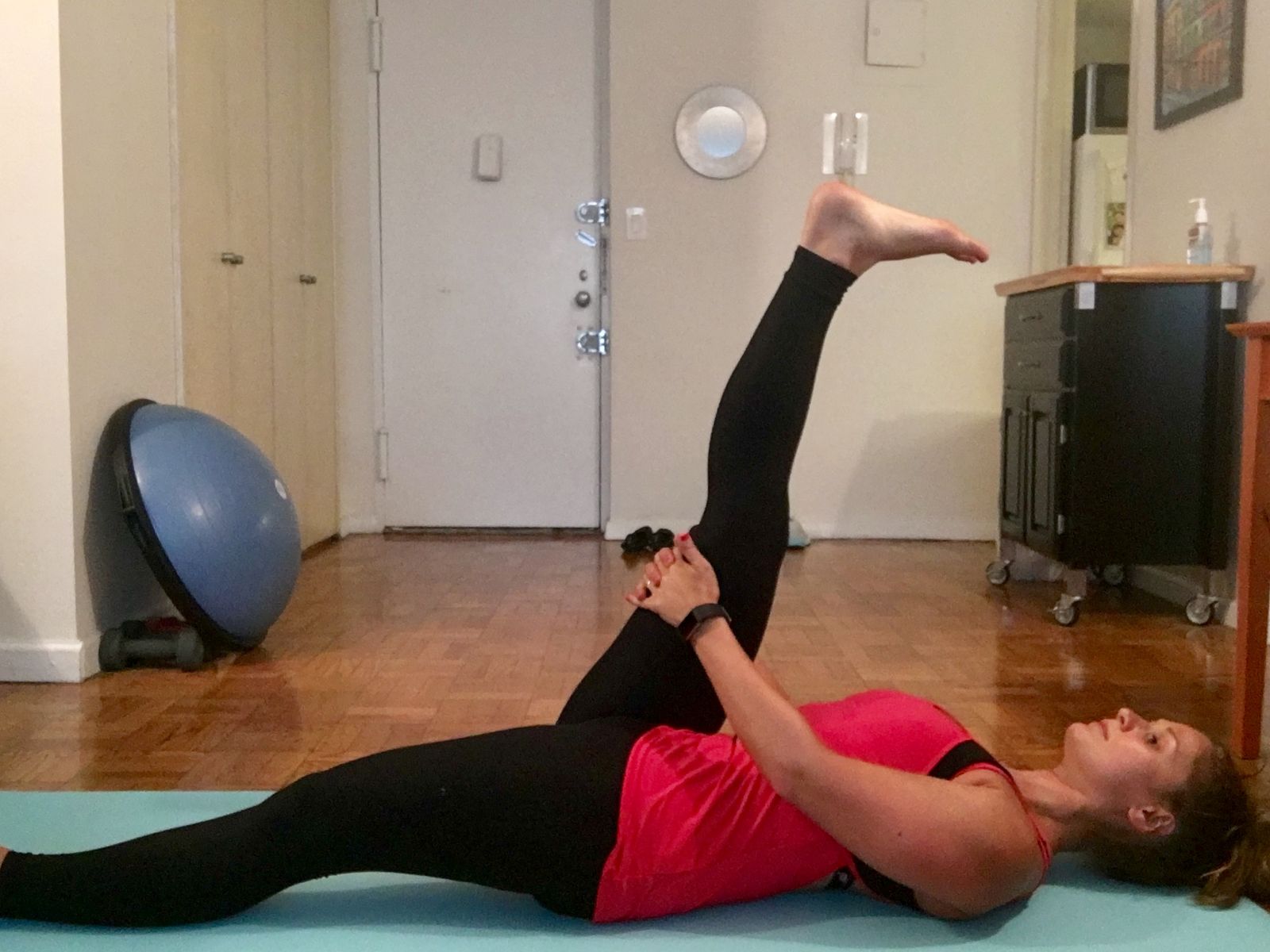
Myofascial Hamstring Release (beginner) - Sit on the floor and place a foam roller under the back of your thighs. Lower your legs onto the roller.
- With your palms flat on the floor beneath your shoulders and fingers pointing forward, straighten your arms and legs, lifting your hips off the floor so that you are balancing your weight on the foam roller (under your thighs) and your hands. Keep the shoulders relaxed and away from the ears. Allow the weight of your body to relax onto the roller.
- Breathe steadily as you shift your weight forward and back, allowing the foam roller to move up and down on the back of your thighs (hamstrings) from your hips to your knees. Repeat several times.
- As you move the roller up and down by shifting your weight forward and back, find tight and sore areas of your thighs and hold those positions to help decrease tension. Keep your abdominals and glutes engaged. Don't roll past your knee.
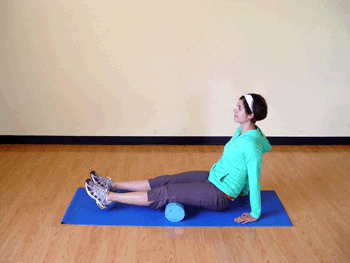
|
|
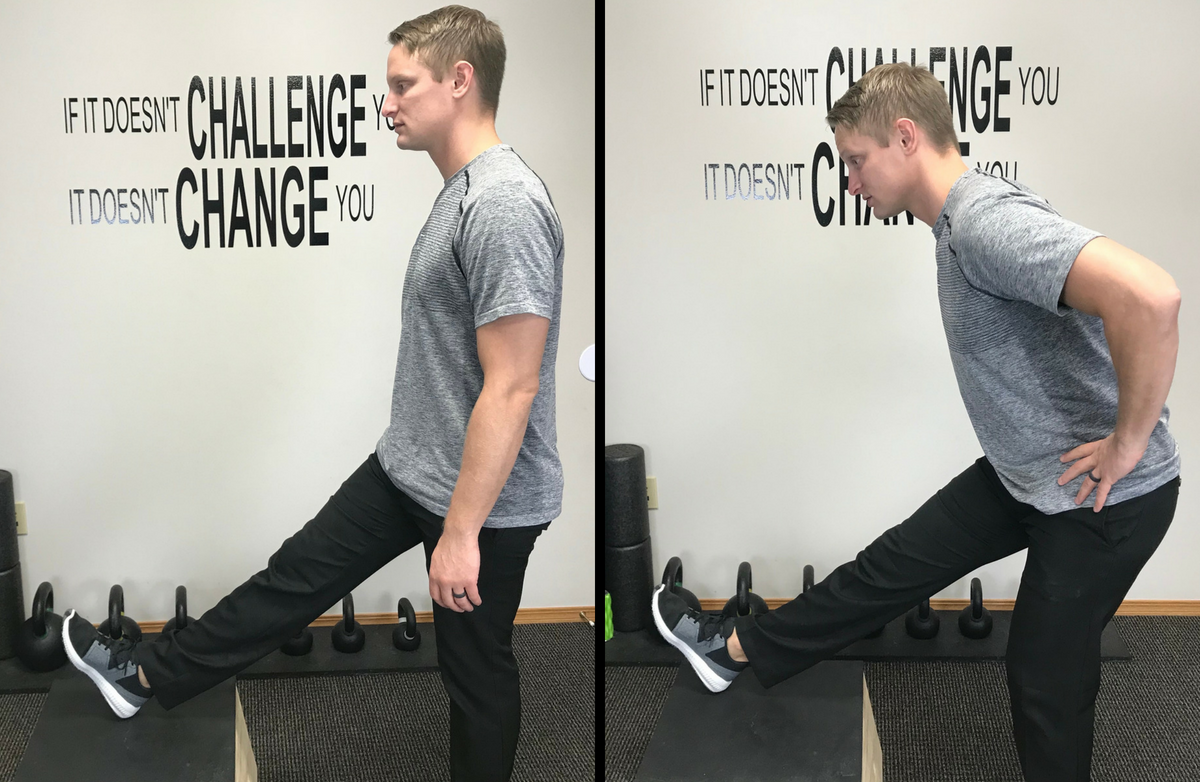

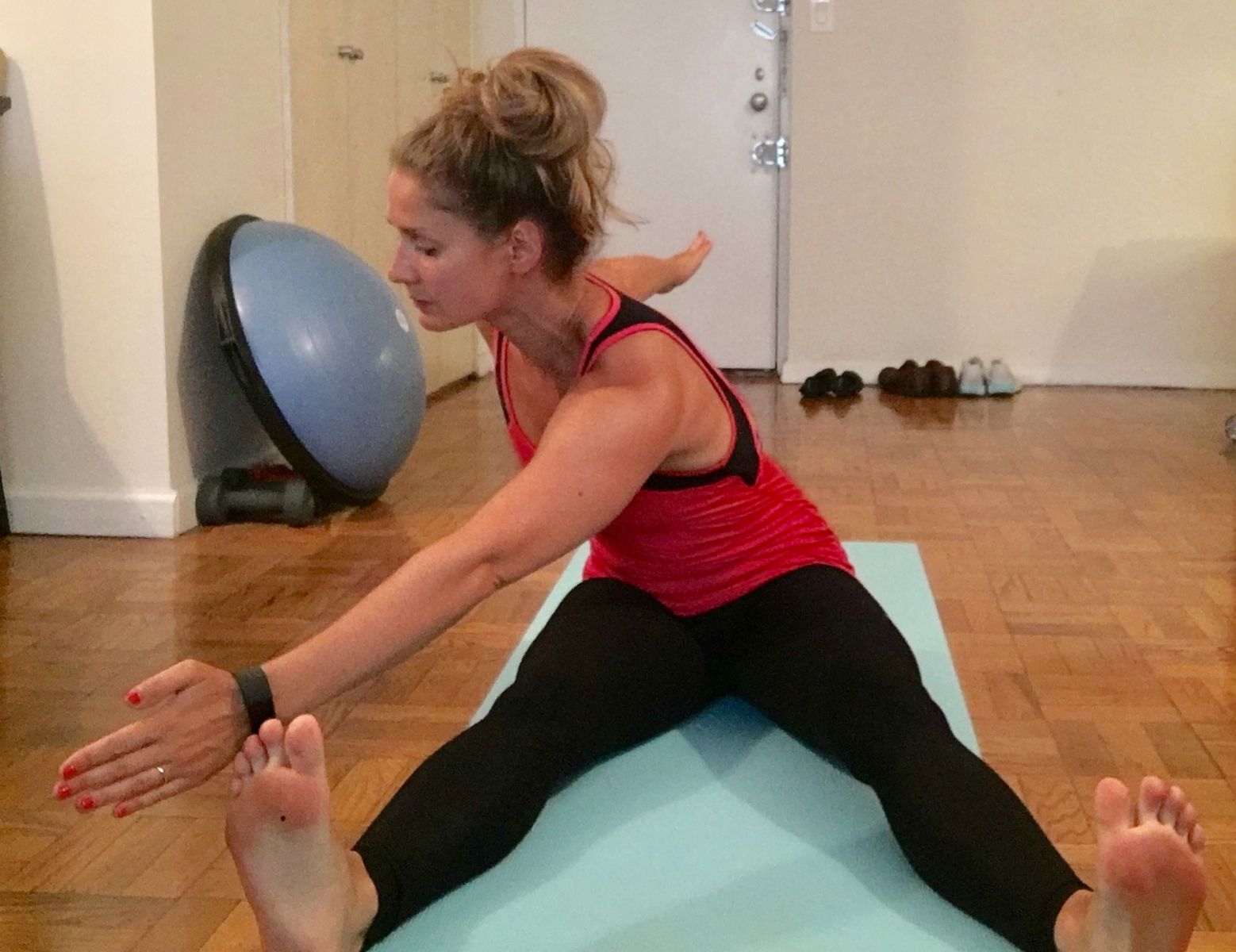



.jpg)
.jpg)
.jpg)









.png)

